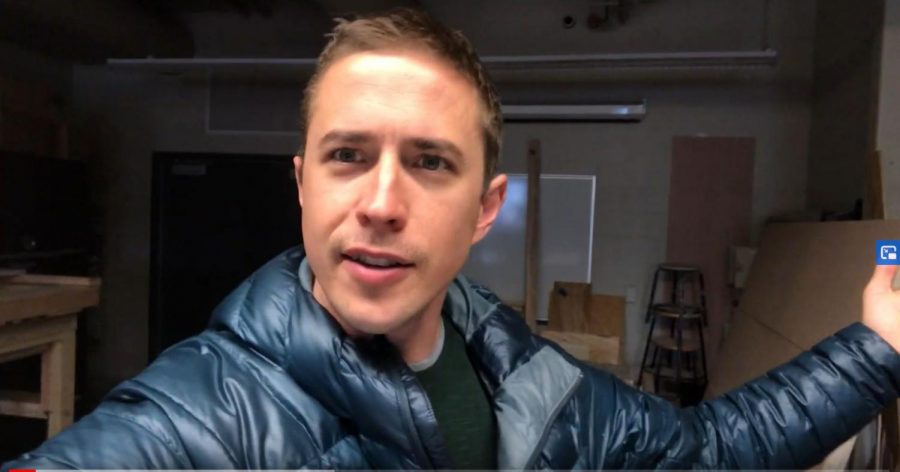TEACHING DURING A PANDEMIC: Benjamin Wills
April 1, 2020
Catron Visiting Professor of Art Benjamin Wills has always found a creative way to connect himself with his students.
It came then as no surprise that Wills decided to use his previously created YouTube channel as a means to communicate with his sculpture students.
“The advantage of YouTube is how familiar everyone is with the platform,” said Wills. “The conversations and the critique that my students have in the classroom can survive in the comment section more so than on an email thread.”
Wills didn’t conform to the “Zoom: Video Conferencing structure.”
“While Zoom is great for meetings, it has its limitations for presenting art and allowing for meaningful, critical feedback,” said Wills of the platform.
Wills’ online portfolio, benjamintoddwills.com, established for his creative work has now become a small database for his student’s videos.
“I built a page on my own website that is the temporary ‘classroom’ for my students. As they post their own projects, I group them together and they can go to and watch each other’s content,” said Wills.
The first online homework assignment was to post a video tour of the room students will be working in for the remainder of the year – providing Wills time to digest the new online class structure.
You can view the class’ video tour collection at https://benjamintoddwills.com/COVID-19
Following students’ video uploads, Wills shared another YouTube video with his sculpture students.
The video titled “AUTOMATIC DRAWING MACHINE MIXER” depicts Wills with a handheld mixer.
Quickly, Wills reinforces a piece of cardboard to a bedroom wall. He then tapes colored pencils, pens and a Sharpie to the rotating spindle of a baking mixer.
“The cardboard is regular refuse – a democratic material. Colored pencils, I suppose, are an art supply; however, I think colored pencils are more commonplace than most academic art materials.”
A struggle for most professors is realizing the major differences in resources between the classroom and bedroom.
“Limited resources, restricted work spaces, even the absence of another human can’t stop the process of meaningful art-making,” said Wills. “In my work, I examine how art operates as a narrative device and consider how electronic and digital systems engage with the physicality and materiality of art and community.”
Darby Rolf, sophomore studio art major, shared her thoughts on the changes to the class structure.
“I was heartbroken when I learned we wouldn’t be meeting in the studio anymore,” said Rolf. “Sculpture is a very versatile medium so it’s not too hard to have folks start making different projects at home.”
Although students and professors are separated – this shouldn’t stop students from pushing their artistic boundaries.
“I hope the message of the piece is that creativity doesn’t stop,” said Wills. Teaching, observing and making art in the age of quarantine will certainly look different, and while it is a challenging moment, this is, ultimately, an opportunity for innovation.”
Rolf admits the creative process has been difficult while in quarantine.
“It’s hard to be inspired and creative right now and talking to a bunch of other artists who are all going through the same thing was cathartic,” said Rolf. “We’ve only had one [online] meeting so far, but I can tell it’s going to be something I look forward to each week.”
Wills’ bottom line is that his class will interact with him via video and that they will find projects they are directly interested in.
“It’s always important to me, whether quarantine-living or free-living, to create assignments that I’m excited about,” said Wills. “If nothing else, I hope this will make a very interesting chapter in my students’ work and my own personal work.”
Rolf sees that creative motivation in Will’s work.
“Ben [professor Wills] helps us generate ideas and improve our projects from the technical perspective of building them,” said Rolf. “More than anything, Ben pushes students to be their personal creative best.”
Edited by Hannah Alleyne, Diana Martinez-Ponce



